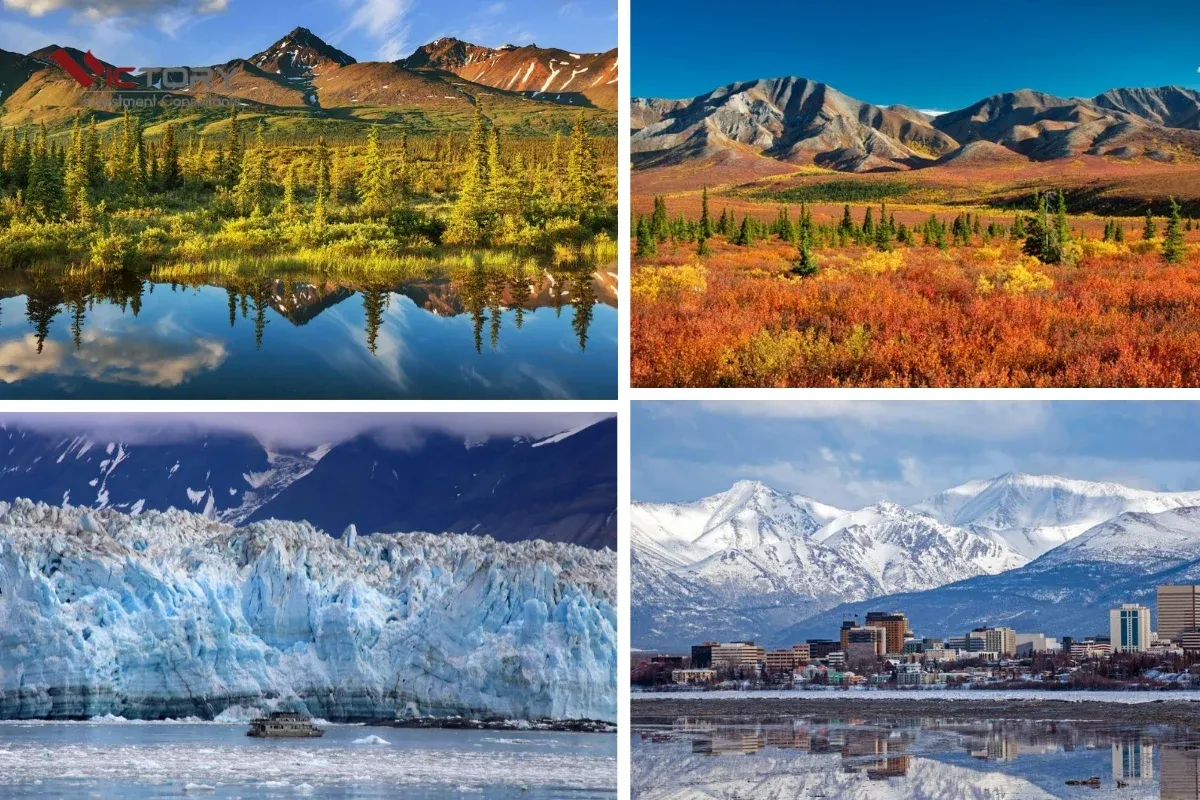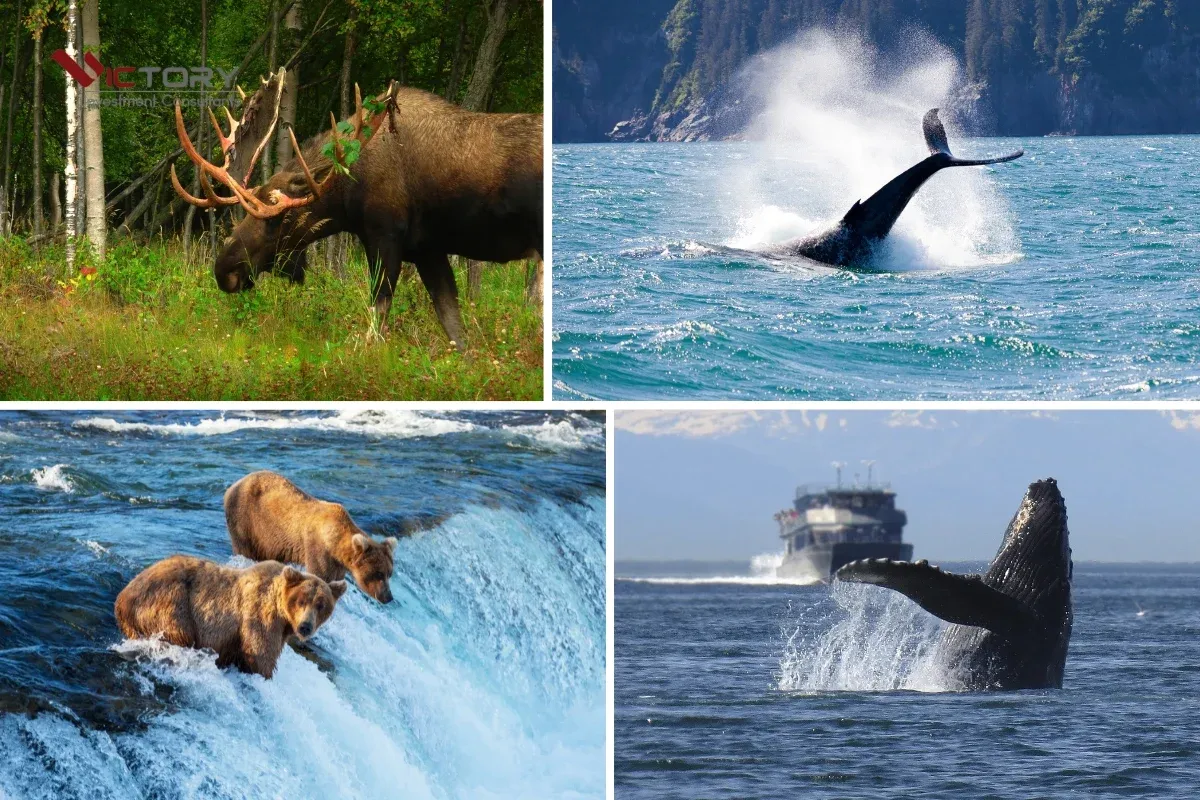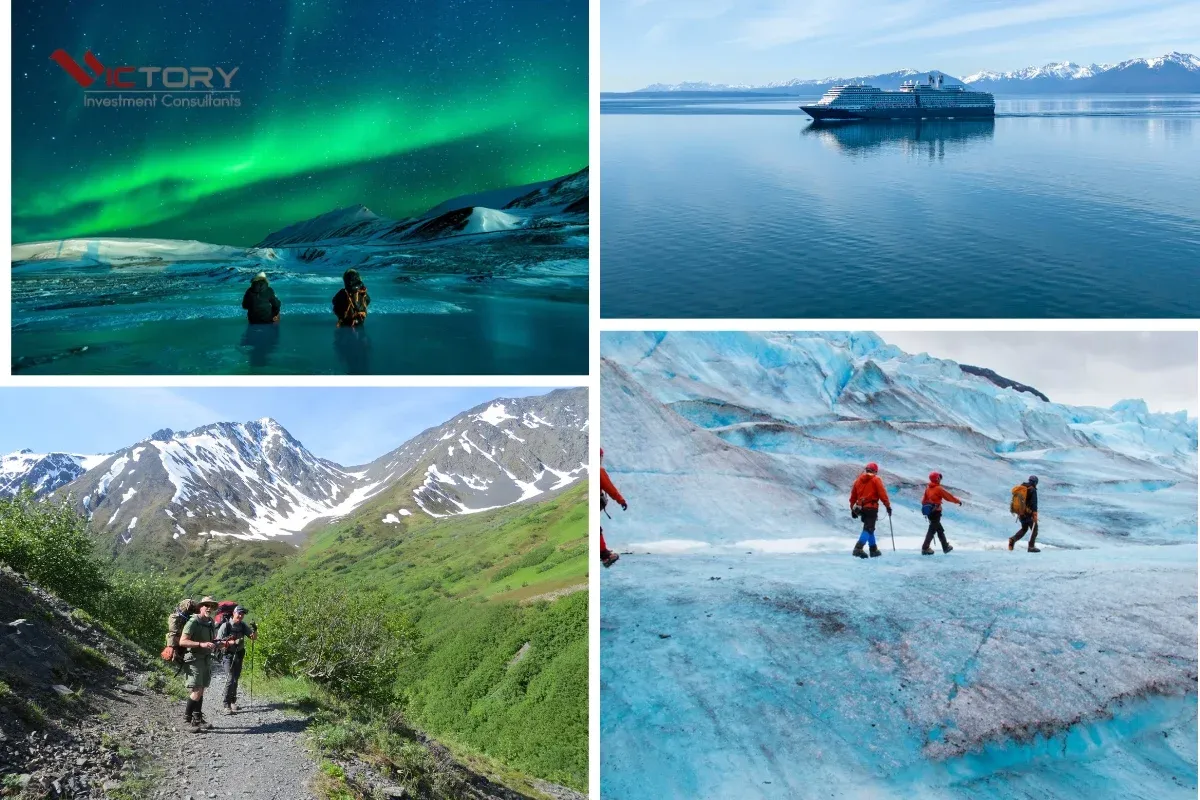Alaska, a land where the sun may not set during summer days and the aurora borealis dances across winter night skies, is not only the largest state in the United States but also a priceless natural treasure. Here, amidst majestic mountain ranges and pristine coastlines, lies a unique wonder: an extensive and magnificent glacier system. This article will take you on an in-depth journey to explore the glacier systems of Alaska, delving into their formation, wondrous beauty, and importance to the environment and human life.
Alaska is not just a land of fascinating natural phenomena but also a living museum of geological history and climate change. Glaciers, eternal rivers of ice flowing slowly over thousands of years, have sculpted Alaska’s unique landscapes and play a vital role in the local ecosystem. Let’s discover the wonders that Alaska’s glacier systems offer.
Alaskan Glaciers: Majestic Natural Wonders
Glaciers are not just massive blocks of ice but complex ecosystems, an integral part of the Alaskan landscape. They are formed from snow that falls heavily year after year, accumulating and compressing into ice. Under the pressure of gravity and new snow, this ice begins to move, forming a slow-moving glacier across the terrain. Alaska boasts countless glaciers of all sizes and shapes, from small glaciers high in the mountains to massive glaciers flowing into the sea, creating magnificent and awe-inspiring scenes.
Alaskan glaciers are not only beautiful but also play a crucial role in regulating water resources, providing freshwater to rivers and lakes, maintaining diverse ecosystems, and influencing the global climate. They are also a major attraction for tourists who want to admire their untouched beauty and experience unique activities on snow and ice.
Diverse Types of Glaciers
The glacier system in Alaska is incredibly diverse, encompassing many types depending on geographical location, morphology, and how they interact with the surrounding environment. Here are some common types of glaciers in Alaska:
- Valley Glaciers: These are the most common type, forming in high mountain valleys. They flow down valleys, confined by rock walls on either side. Mendenhall Glacier near Juneau is a prime example of a valley glacier, easily accessible and visitable.
- Tidewater Glaciers: These glaciers terminate in the sea, where they frequently produce “glacial calving” – the breaking off of ice into large icebergs. Glacier Bay and Kenai Fjords are famous for their stunning tidewater glaciers like Margerie Glacier and Holgate Glacier.
- Icefields: These are vast areas of ice covering large expanses in high mountains, often the source of many valley glaciers. The Columbia Icefield, one of the largest icefields in North America, is a typical example.
- Hanging Glaciers: This type of glacier forms on steep mountainsides and appears to “hang” high above. They are usually smaller than other types and can create spectacular icefalls.
- Piedmont Glaciers: These form when one or more valley glaciers flow out of the mountains and spread out onto a coastal plain. Malaspina Glacier in the Yakutat area is a large example of a Piedmont glacier.

Most Famous Glacier Areas in Alaska
Alaska is a glacier paradise, with many renowned areas attracting visitors from around the world. Here are some must-visit destinations if you want to explore Alaska’s magnificent glacier systems:
- Glacier Bay National Park: Glacier Bay National Park is famous for having over 50 glaciers, many of which are active tidewater glaciers. Cruising is the most popular way to explore the bay, allowing you to admire massive glaciers up close, witness calving events, and observe wildlife such as whales, seals, and seabirds.
- Kenai Fjords National Park: Kenai Fjords National Park is known for its fjords created by glaciers and the Harding Icefield, one of the four largest icefields in the United States. Cruises and kayak tours are excellent ways to explore tidewater glaciers and the rich marine ecosystem here. Exit Glacier is one of the few glaciers accessible by road in this park.
- Wrangell-St. Elias National Park and Preserve: This is the largest national park in the United States, encompassing some of the highest mountains in North America and the vast Bagley Icefield. The park features magnificent glaciers like Nabesna Glacier and Kennicott Glacier, offering great opportunities for adventurous expeditions and ice climbing.
- Chugach National Forest: Chugach National Forest near Anchorage is home to Matanuska Glacier, one of the most accessible glaciers in Alaska. Visitors can join glacier trekking tours, ice climbing, and explore stunning ice caves. Portage Glacier and Byron Glacier are also popular destinations in this area.
- Juneau Icefield: Juneau Icefield, located near the capital city of Juneau, is the source of many famous glaciers such as Mendenhall Glacier and Taku Glacier. Helicopter and dog sledding are unique ways to explore this vast icefield.

Impact of Climate Change on Alaskan Glaciers
Alaskan glacier systems are facing serious challenges from climate change. Rising global temperatures have caused glaciers to melt at an accelerated rate, leading to numerous negative consequences for the environment and humans.
- Rapid Melting: Alaskan glaciers are melting faster than ever due to warming temperatures. Scientific studies have shown that many glaciers in Alaska have lost a significant amount of ice in recent decades, and this melting rate is increasing.
- Sea Level Rise: Meltwater from Alaskan glaciers contributes to global sea level rise. This threatens coastal communities worldwide, causing increased risks of flooding and coastal erosion.
- Ecosystem Changes: Melting glaciers affect both freshwater and marine ecosystems. Meltwater carries nutrients and sediments, impacting the lives of marine organisms and salmon, a vital resource for Alaska.
- Natural Disaster Risks: Glacier melting can increase the risk of glacial outburst floods and landslides. These events can cause significant damage to infrastructure and threaten human lives.
- Impact on Tourism: While melting glaciers may reduce the area of ice available for visitation, it also creates new opportunities for tourism. New rivers and lakes formed from meltwater can become attractive destinations for activities like kayaking and fishing. However, sustainable tourism management measures are needed to protect the glacier environment.

Tourism and Experiencing Alaskan Glaciers
Despite facing challenges from climate change, Alaskan glacier systems remain a captivating tourist destination. There are many ways to explore and experience the wondrous beauty of glaciers:
- Glacier Cruises: Cruises are a popular option for exploring tidewater glaciers in Glacier Bay and Kenai Fjords. Cruise tours typically last from a few hours to several days, bringing visitors close to glaciers, observing calving events, and wildlife viewing.
- Glacier Hiking: In areas like Matanuska Glacier and near Juneau, visitors can join glacier hiking tours. With expert guidance and proper equipment (crampons, hiking poles), you can walk on the ice surface, explore crevasses and ice caves.
- Glacier Kayaking: Kayaking is a fantastic way to explore tidewater glaciers from a closer perspective. Kayak tours are often organized in Glacier Bay and Kenai Fjords, allowing you to glide on the water, navigate among icebergs, and admire glaciers from below.
- Helicopter Glacier Tours: Helicopters are an ideal means to admire the panoramic views of vast glacier systems from above. Helicopter tours often fly over Juneau Icefield, Wrangell-St. Elias, and other glacier areas, providing an unforgettable experience of Alaska’s majestic glacier beauty.
- Visit Glacier Information Centers: Visitor centers at national parks and glacier areas often provide detailed information about glaciers, their formation history, ecosystems, and the impacts of climate change. These are excellent places to learn more about glaciers before embarking on your exploration.

Conclusion
The glacier systems of Alaska are a priceless natural wonder, not only possessing majestic beauty but also playing a crucial role in global ecosystems and climate. From easily accessible valley glaciers to vast icefields and spectacular tidewater glaciers, Alaska offers countless opportunities to explore and experience the beauty of ice and snow.
However, Alaskan glacier systems are facing serious impacts from climate change. Protecting and conserving these wonders is not only the responsibility of Alaskans but also of the global community. Let’s learn, explore, and act together to protect Alaska’s glacier systems for future generations. If you have the chance to visit Alaska, don’t miss the opportunity to admire and experience the magical beauty of these eternal rivers of ice.